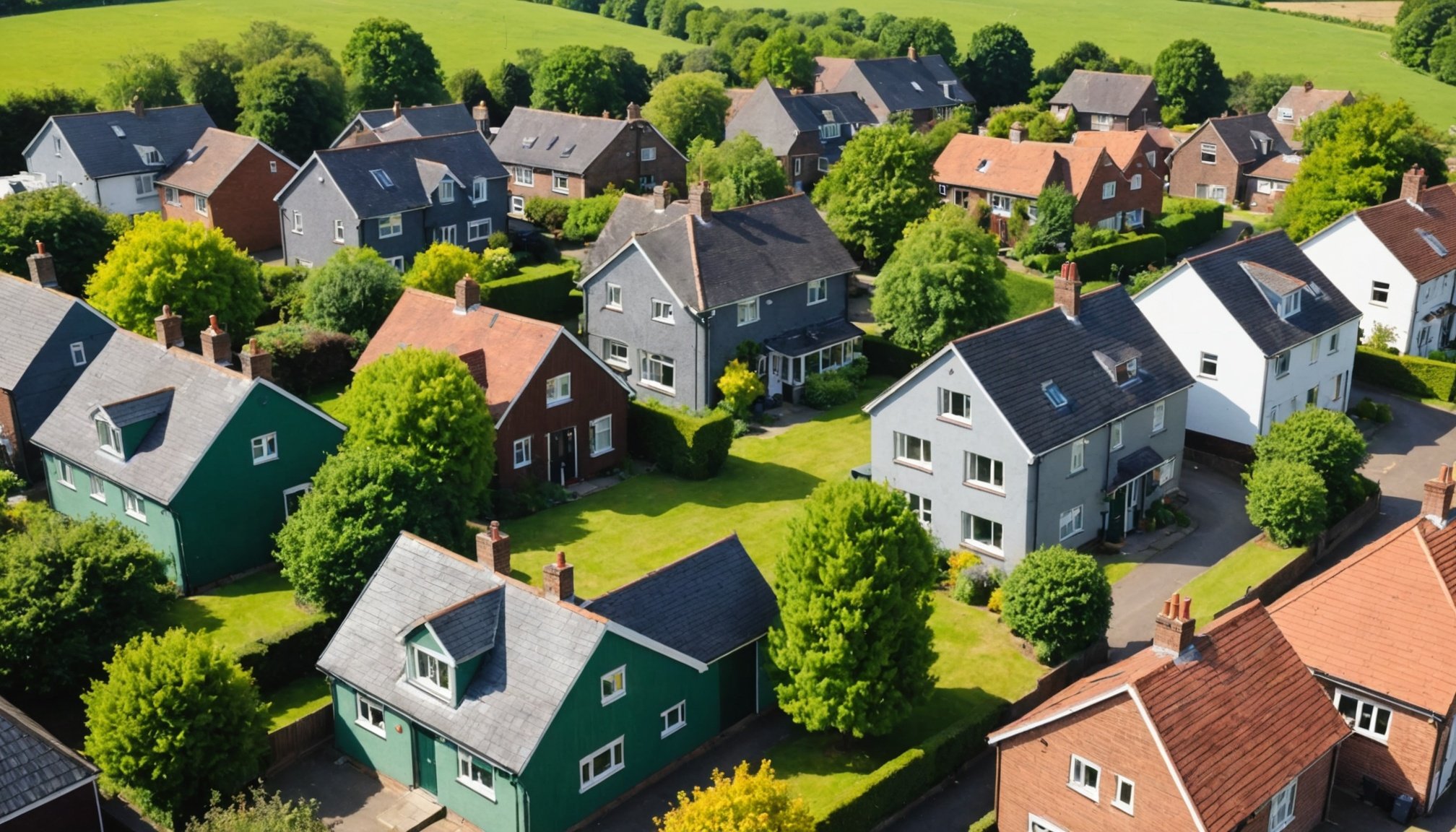Unlocking Savings: A Comprehensive Guide to Evaluating the Financial Benefits of a Green Mortgage in the UK
What are Green Mortgages and How Do They Work?
Green mortgages are designed to incentivize homeowners and buyers to opt for energy-efficient properties or to make green home improvements. These mortgages often come with special perks such as lower interest rates, cashback incentives, or interest-free loans for energy-efficient upgrades.
For instance, Nationwide offers £500 cashback on mortgages for properties with an EPC (Energy Performance Certificate) rating of A, and £250 for those with a B rating. Additionally, Nationwide provides interest-free borrowing of between £5,000 and £15,000 for green home improvements over a two-year or five-year fix[1].
This might interest you : Unlocking Solar Savings: A Comprehensive Guide to Assessing Your Financial Benefits from Solar Panel Installation in the UK
Virgin Money also offers a preferential interest rate for new-build properties with an EPC rating of A or B, and a £250 cashback for existing Virgin mortgage holders who borrow additional money for green improvements[1].
Financial Benefits of Green Mortgages
The financial benefits of green mortgages can be substantial, but they vary depending on the lender and the specific terms of the mortgage.
Interest Rates and Cashback
Green mortgages can offer lower interest rates compared to traditional mortgages, especially for properties with high energy efficiency ratings. For example, Barclays offers a lower mortgage rate for buying a new-build property with an A or B EPC rating[3].
Here is a comparative table to illustrate the potential savings:
| Loan-to-Value | Green/Non-green | Interest Rate + Set-up Fees | Monthly Payment | Cost Over Two Years |
|---|---|---|---|---|
| 60% | Non-green (Yorkshire BS) | 4.64% + £1,495 | £677 | £17,574 |
| 60% | Green (Virgin Money) | 4.84% + £1,208 | £690 | £17,408 |
| 75% | Non-green (Yorkshire BS) | 4.64% + £1,495 | £846 | £21,626 |
| 75% | Green (Natwest) | 4.74% + £1,025 | £854 | £21,382 |
| 90% | Non-green (Cumberland) | 5.07% + £1,019 | £1,060 | £26,514 |
| 90% | Green (Barclays) | 5.56% + £35 | £1,112 | £26,786 |
As shown, while green mortgages can sometimes be more expensive in the short term, they often come with additional benefits that can offset these costs over the long term[1].
Long-Term Savings
One of the most significant financial benefits of green mortgages is the long-term savings on energy bills. Energy-efficient homes are cheaper to run, which can lead to substantial savings over the years.
For example, if you invest in a heat pump or solar panels, you could save hundreds of pounds annually on your energy bills. Here are some potential long-term savings:
- Heat Pumps: Up to £1,300 per year in savings compared to traditional heating systems[3].
- Solar Panels: Up to £400 per year in savings, plus potential income from the UK government’s Feed-in Tariff scheme[3].
Property Linked Finance: A New Approach to Green Home Improvements
Property Linked Finance (PLF) is an innovative approach that ties the loan to the property rather than the owner. This model could unlock significant investment in green home improvements.
How PLF Works
PLF agreements allow homeowners to borrow money for energy-efficient upgrades, with the loan repayments tied to the property. When the property is sold, the new owner takes over the loan repayments, benefiting from the energy-efficient improvements[2].
Eloise Henderson-Day, PLF programme director at the Green Finance Institute, emphasizes the collaborative approach needed for PLF’s success: “Successfully introducing PLF in the UK will require a collaborative approach across the entire built environment ecosystem. We are working with financial institutions, policymakers, regulators, local authorities, property owners and experts to ensure financial, real estate and retrofit industries support the evolution of this innovative green finance solution, but more players are needed.”[2]
Potential Investment
The PLF initiative could unlock between £52 billion and £70 billion of private investment in the UK residential market, significantly contributing to the country’s decarbonization goals. This investment is crucial, given the estimated £360 billion needed to decarbonize UK buildings by 2050[2].
Role of Banks and Financial Institutions
Banks and financial institutions play a critical role in promoting green mortgages and home finance products.
Barclays Green Home Mortgage
Barclays offers a Green Home Mortgage with a lower interest rate for new-build properties with high energy efficiency ratings. Additionally, their Greener Home Reward provides up to £2,000 for existing mortgage customers to make energy-efficient improvements without needing additional borrowing[3].
Bank of England’s Climate Risk Reforms
The Bank of England has updated its collateral framework to reflect climate risks, which encourages greener mortgage lending. By aligning collateral eligibility with government regulations on energy efficiency, the Bank discourages lending on energy-inefficient properties and incentivizes retrofitting[4].
Practical Insights and Actionable Advice
When considering a green mortgage, here are some practical insights and actionable advice:
Assess Your Energy Efficiency Needs
Before applying for a green mortgage, assess your property’s energy efficiency. Check your EPC rating and identify areas for improvement.
Compare Mortgage Rates
Compare the rates and terms of different green mortgage products. While some green mortgages may have slightly higher interest rates, the long-term savings and additional incentives can make them more cost-effective.
Explore Additional Incentives
Look into additional incentives such as cashback, interest-free loans, and government grants for energy-efficient improvements.
Consider Property Linked Finance
If you plan to stay in your property long-term or are looking for a more sustainable financing option, consider Property Linked Finance.
Green mortgages offer a compelling way to combine financial savings with environmental benefits. By understanding the various products available, the long-term savings potential, and the innovative financing models like Property Linked Finance, homeowners can make informed decisions that align with their financial and environmental goals.
As the UK moves towards its net zero carbon target, green mortgages and home finance products will play an increasingly important role. Whether you are buying a new home, improving an existing one, or simply looking to reduce your energy bills, exploring green mortgage options could be a smart and sustainable choice.
Key Takeaways
- Green Mortgages: Offer lower interest rates, cashback incentives, and interest-free loans for energy-efficient upgrades.
- Long-Term Savings: Significant savings on energy bills through energy-efficient improvements.
- Property Linked Finance: Ties loans to properties, encouraging long-term investment in energy efficiency.
- Bank and Government Support: Financial institutions and government policies are crucial in promoting green finance and reducing carbon emissions.
- Practical Advice: Assess energy efficiency needs, compare mortgage rates, explore additional incentives, and consider innovative financing models.
By embracing green mortgages and home finance products, we can not only save money but also contribute to a more sustainable future for all.











